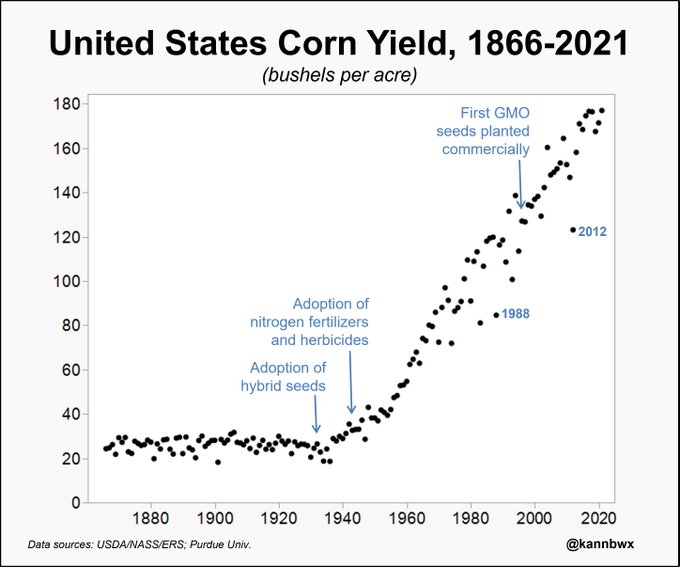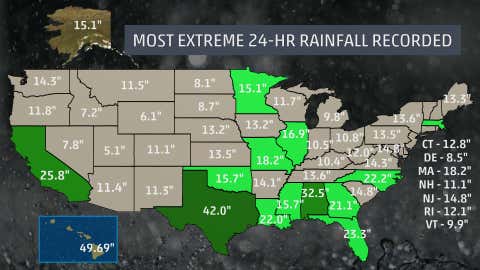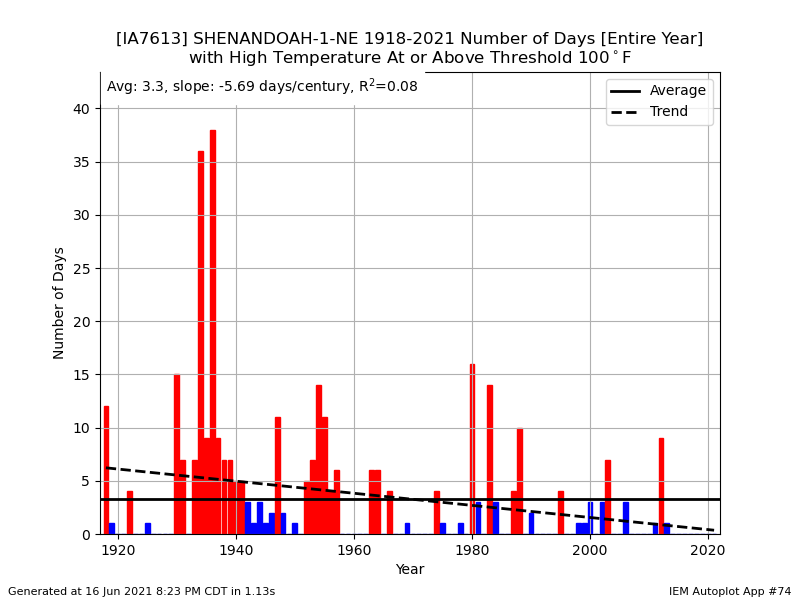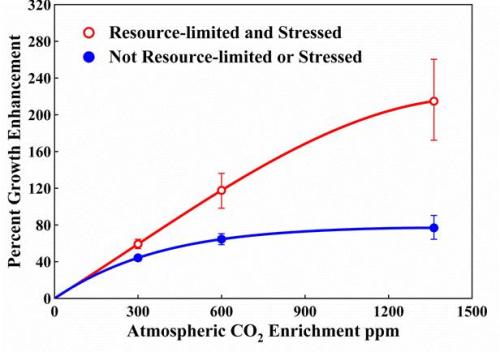I actually went to school with Jeff Masters at the University of Michigan which is part of the reason to comment. He's really smart, got a PHD and is very outspoken about the fake climate crisis.
However, smart scientists like Jeff, that were convinced of the climate crisis decades ago keep using data to try to confirm the conclusions of what they are positive that they know, while completely ignoring powerful evidence that contradicts it. Let's show that happening here.
Scientists should always start with no conclusion and LET THE DATA, followed by analysis and constant skepticism of everything we find lead us.......until it repeats itself every time....then escorts us to the land of authentic science.
Lets' examine these extreme rains in St. Louis and view them in context to the Summer weather for the Midwest the past 100 years.
1. The atmosphere at +1 Deg. C warmer can hold up to 7% more precipitable water. Because greenhouse gas warming by CO2 mostly affects the driest places and the coldest places at the coldest times of year, it hasn't been as big of a contributor to warm, humid places, which is the Midwest right now and what caused this extreme rain event.
See my description of molecular physics for that here:
https://www.marketforum.com/forum/topic/87422/
2. However, outside of the Summer season, CO2 can contribute up to 1 deg. C of warming to a place like St. Louis. Let's pretend that this event happened then. How much additional rain can fall, if all other variables are held constant and we increase the moisture by 7% from an increase in temperature of +1 deg. C?
The extra moisture equates to roughly an additional .6 inches of rain. So the 8.60 daily rainfall record would have been around 8.0 inches......all things equal except for global warming/climate change. Still the rains would have been slightly less if we had the OLD climate.
3. Note that they completely ignore the significance of the HUGE benefits that Summer climate change has bestowed on the Midwest.
their quote: "Although the Midwest climate is naturally drought-prone, recent decades have trended more toward the wet side of the spectrum."
"Recent decades", as they call them have featured the BEST growing and year round living conditions in the Midwest in recorded history but a wide margin. The last 2 droughts were in 2012, and 1988 (from natural La Nina's-cold water in the topical Pacific). Before climate change, we averaged more than 1 drought/decade and the 1930's featured more droughts in 6 years BEFORE climate change, than we've had in 30+ years AFTER climate change.
4. So they focus on isolated, heavy rain events like this, with slightly heavier rains and ignore the other 99% of the weather that's been the same or better in the Midwest compared to before climate change
5. The position of this side, is to make us think that the old climate/atmosphere, 100 years ago was better. What would happen to the growing season weather if we could actually go back to that OLD climate? Let's find out if this is true.
a. Crop yields would drop around 35%. On average for every 5 ppm of added CO2, plant growth is +1%. We've gone from 300 ppm to almost 420 ppm, which is 24% just from the extra CO2. https://www.marketforum.com/forum/topic/67877/
https://www.marketforum.com/forum/topic/62784/
b. Part of that is the longer growing seasons. Around 10 days longer in the Midwest with the NEW climate: https://www.marketforum.com/forum/topic/87422/#87424
c. In addition, the OLD climate featured frequent widespread severe droughts that caused very small crops, as mentioned earlier.
d. In addition, the added CO2 is causing plants in the NEW climate to be more drought tolerant and water efficient. Plants get their CO2 by opening their stomata on the underside of leaves. When they do this, they lose water via transpiration. More CO2 allows them to intake CO2 with a less open stomata and results in less water losses from transpiration. https://www.marketforum.com/forum/topic/62784/#62797
7. The NEW climate beats the OLD climate in most ways during the growing season by an extremely wide margin. The authentic science shows that we are having a climate OPTIMUM not a crisis.
But they sensationalize high end flooding events like this one with bad science and use no perspective when discussing the big picture of the NEW climate.
The more extreme a weather event is, the more that natural variation of weather patterns likely played a role and the less that climate played a role. This is the Golden Rule of Climate Extremes:
https://cliffmass.blogspot.com/2016/03/the-golden-rule-of-climate-extremes.html
In this case, I estimate that:
8.0 inches of rain fell from an extreme, natural variation in the weather pattern those days.
0.6 inches was potentially added from climate change.


 by
by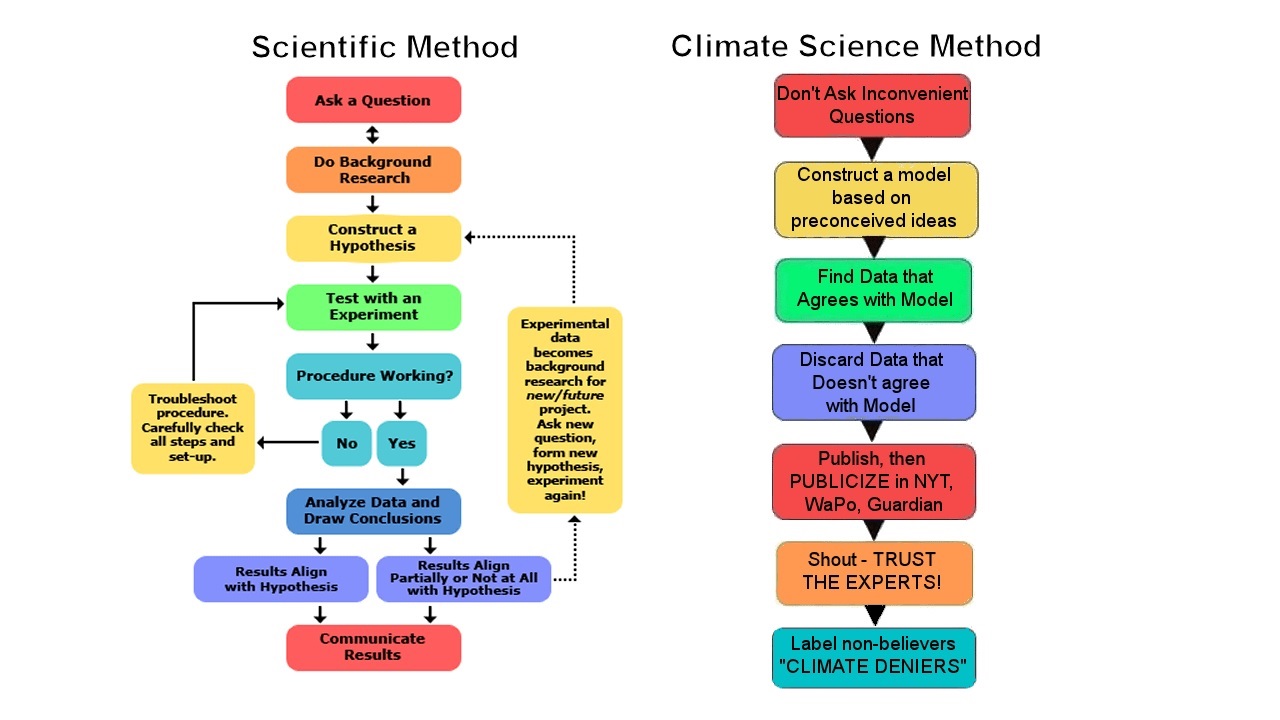 Thanks to "Old Man Winter" at WUWT for the colorful graphic.
Thanks to "Old Man Winter" at WUWT for the colorful graphic.